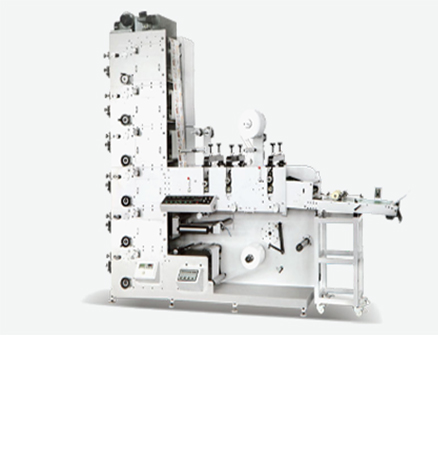When it comes to choosing a printing technology for product labels, the debate between flexographic (flexo) and digital printing has long focused on “either/or” thinking. However, the reality is far more nuanced: neither technology is inherently superior—their value depends on a brand’s unique needs, from order volume and design complexity to lead time and substrate requirements. While digital printing excels in short runs and personalized designs, flexo printing remains the backbone of large-scale label production, offering unmatched efficiency and durability for high-volume orders.
The most fundamental distinction between flexo and digital printing lies in how cost scales with order volume:
Digital printing: Plate-free by design, it eliminates setup costs (e.g., plate creation, alignment) and is cost-competitive for small-to-midsize runs. Its fixed costs are low, but slower throughput (typically 50–150 meters/hour) makes it expensive for large orders.
Traditional flexo printing: Requires custom rubber or metal plates (one per color) and labor-intensive setup, driving higher upfront costs. However, its high throughput (300–500 meters/hour) lets brands amortize these costs over large runs (100,000+ labels), resulting in lower unit costs.
Quality priorities shift with order goals—digital shines for fine details, while flexo excels in long-run consistency:
Digital printing: Uses CMYK blending and electrophotographic imaging to deliver sharp gradients, accurate flesh tones, and minimal color variation across every label. It struggles, however, with specialty inks and Pantone spot colors.
Traditional flexo printing: Delivers reliable color consistency for millions of labels, making it ideal for flagship products. But it often struggles with fine lines (≤1pt) and high-resolution images, as plate alignment and roller calibration depend on operator skill.
A label’s durability and appearance depend on how well the printer handles its substrate. Both technologies are versatile, but flexo has a edge in tough materials:
Digital printing: Works with paper, thin films (BOPP), and basic metallics but struggles with thick substrates (≥200μm) or specialty materials (e.g., heat-resistant films, textured paper). Adhesion can fail in moist or high-temperature environments.
Traditional flexo printing: Excels with films, metallics, and textured substrates—critical for waterproof (e.g., shampoo bottles) or industrial labels. It struggles, however, with ultra-thin films (≤25μm) and rigid substrates.
Speed matters, but “fast” means different things for small vs. large orders:
Digital printing: No setup = quick turnaround—orders of 10,000 labels can be ready in 1–2 days. For urgent promotions, this is unbeatable.
Traditional flexo printing: Setup (plate creation, alignment) takes 1–3 days, but once running, it outpaces digital for large orders. A 1 million-label order takes 3–4 days with flexo vs. 7+ days with digital.
Dual servo motors (selected models): Such as SFLEX and EFLEX series. Each unit is driven by independent dual servos, ensuring stable registration accuracy at high speed (up to 200m/min). Capable of printing ultra-thin materials (12 microns) and compatible with shrink films.
Single servo motor (selected models): Such as CFLEX series. Equipped with Yaskawa system, it supports auto-registration at high speed, with a minimum printing thickness of 38 microns. Compatible with most materials except shrink films (films, paper, aluminum foil, etc.).
Imported system support: Some models adopt German Rexroth/Baumuller servo systems to further enhance control stability and durability.
Water-cooling device: The printing carrier rollers are equipped with a water-cooling system, preventing thin film materials from thermal deformation during UV curing and solving the "film printing wrinkling" issue.
High-precision sleeves & roller sets: Plate rollers are pillow-mounted with high-precision gears. No major printing pressure adjustment is needed for roller replacement—only minor support frame tuning, ensuring easy operation and reduced waste.
Advanced registration control: Supports "lateral motor-driven + longitudinal servo-driven" registration adjustment. Some models (e.g., CFLEX-340-9C-2D) allow 360° registration, with printing precision up to ±0.1mm and die-cutting precision up to ±0.15mm.
Both Flexo and Digital printing have their place in today’s label industry.
Digital printing excels in flexibility, short runs, and customization.
Flexo printing delivers unbeatable speed, color accuracy, and cost efficiency for large-scale production.
For companies seeking long-term, high-quality, and cost-effective label production, the Hongsheng Label Flexo Printing Machine provides the perfect balance of speed, precision, and flexibility — empowering your business to meet today’s market demands with confidence and efficiency.


GET A QUOTE